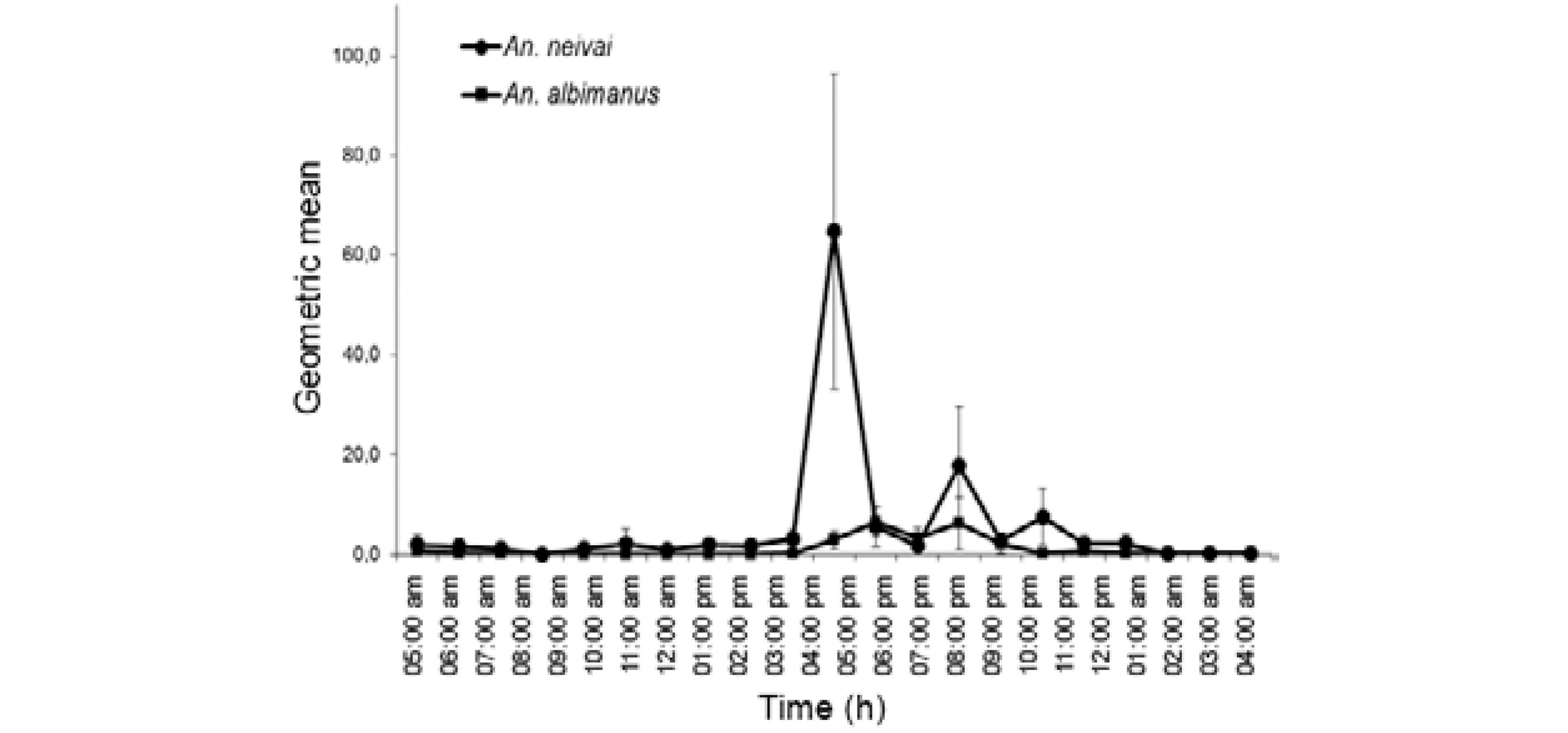On the southwest Pacific Coast of Colombia, a field study was initiated to determine the human-vector association between Anopheles (Kerteszia) neivai and fishermen, including their nearby houses. Mosquitoes were collected over 24-h periods from mangrove swamps, marshlands and fishing vessels in three locations, as well as in and around the houses of fishermen. A total of 6,382 mosquitoes were collected. An. neivai was most abundant in mangroves and fishing canoes (90.8%), while Anopheles albimanus was found indoors (82%) and outdoors (73%). One An. neivai and one An. albimanus collected during fishing activities in canoes were positive for Plasmodium vivax , whereas one female An. neivai collected in a mangrove was positive for P. vivax . In the mangroves and fishing canoes, An. neivai demonstrated biting activity throughout the day, peaking between 06:00 pm-07:00 pm and there were two minor peaks at dusk and dawn. These peaks coincided with fishing activities in the marshlands and mangroves, a situation that places the fishermen at risk of contracting malaria when they are performing their daily activities. It is recommended that protective measures be implemented to reduce the risk that fishermen will contract malaria.
malaria; Kerteszia; Anopheles neivai; biting activity; Colombia





